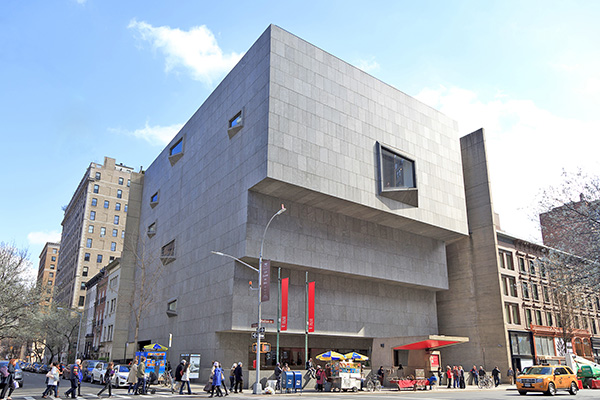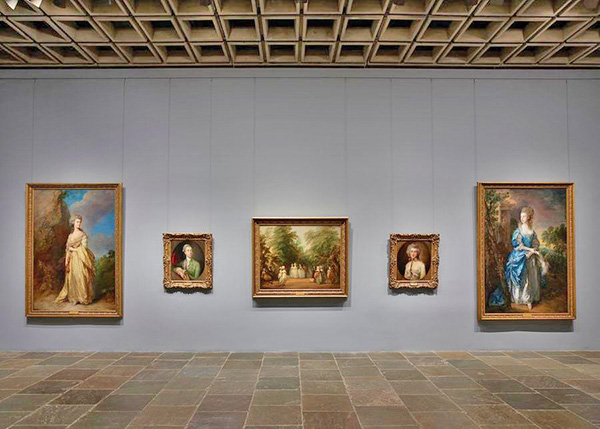I was very happy to be standing in line in the cold wind this past Saturday morning waiting for The Frick Madison to open. Preservation is under attack, often outrageously, on a lot of fronts. My spirit needed replenishing.
I’ve always respected Marcel Breuer’s 1966 stone and stepped concrete design for what was then the Whitney Museum. It just wasn’t a favorite. Now I understand why it’s been referred to as an “inhabitable sculpture.”

Of course, this isn’t the first time the Breuer has welcomed another museum’s collections. After the Whitney moved to its Renzo Piano designed home, the Metropolitan Museum leased the Breuer to display its modern and contemporary art. Beyer Blinder Belle did a masterful restoration prior to the 2016 opening that earned one of our Lucy G. Moses Preservation Awards. There were some interesting exhibitions. But the building was the background. Now the Frick will display some 300 pieces of its collection there for the next two years as its 1914 Carrere and Hastings designed home welcomes renewal and an expansion.
With the Frick collection of Old Masters spaced against grey walls, both the art and building shine. At the Frick, you gazed up at lovely late 18th-century portraits of British women in the dining room. At the Frick Madison, the art is at eye level, with no elegant furniture and drapery to distract you. It’s as though you are finally getting to meet Selina, Lady Skipwith, and her cohorts. Lady Skipwith maintains her composure in her new surroundings. Lady Hamilton and Sara, and Lady Innes look delighted with the new digs.
Holbein’s portraits of Thomas More and Thomas Cromwell were separated by a fireplace at the Frick with El Greco’s brightly robed St. Jerome drawing your eye above the mantelpiece. The portraits are now isolated and so close to each other you can feel the tension as their eyes meet.
The museum directs your walk through the floors. At one turn, Rembrandt’s self-portrait practically fills the opening and seems to invite you in to view his other works.

Breuer created a “solid, permanent sanctuary for art” complete with a processional walk across a concrete bridge to separate the art within from the clamor of the City. The Frick Madison allows you to appreciate the adaptability of great architecture along with the great art it now contains. The Frick Madison is open for members now but will be open to the public with timed tickets on March 18.
I heard MOMA Director Glenn Lowry give a talk last week inviting people to tour MOMA and other museums. He noted that the current capacity limits allow you to spend some quiet time with the art. And all the institutions have safety protocols. There is much to deal with as the City recovers. Our museums offer beauty and inspiration to help us recover as well.
Peg Breen, President
The New York Landmarks Conservancy
info@nylandmarks.org
